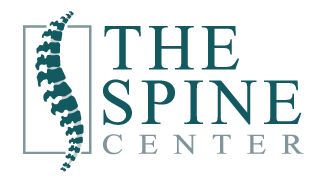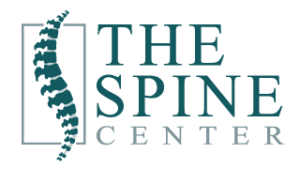You’re strutting down the street, feeling on top of the world, when suddenly – ouch! – your spine decides to throw a tantrum, leaving you doubled over in pain. Ah, the joys of spinal discomfort!
Never fear- we can help you out.
Let’s go through our top spinal care tips.
Core Exercises
Exercising generally is a good way to avoid spine pain.
Planks are helpful when it comes to strengthening your core muscles, including your abdominals, your obliques, and lower back. Start with a standard forearm plank and gradually progress to side planks, plank with leg lifts, or plank variations on a stability ball for added challenge.
Bridges target the glutes, hamstrings, and lower back muscles, providing stability to the spine. Perform variations such as single-leg bridges, bridge pulses, or bridge marches to engage different muscle groups effectively.
Think About Sitting Position
Bad posture and sitting badly can cause spine problems.
Invest in an ergonomic chair that helps support the natural curve of your spine. Look for chairs with adjustable height, lumbar support, and armrests to promote proper alignment and reduce strain on your back.
Keep your feet flat on the floor. If you’re too short, try a footrest. Try not to keep your legs crossed for long periods of time, as it can lead to uneven pressure on your hips and spine.
If you use a keyboard and mouse, ensure your elbows are at a 90-degree angle and supported by armrests. Avoid reaching too far or straining your arms and shoulders while you’re typing or using a mouse.
See a Chiropractor
Seeing a chiropractor can indeed be an effective way to prevent and manage spinal pain.
Chiropractors use hands-on techniques to adjust your spine and other joints in the body. These adjustments help restore proper alignment, alleviate joint restrictions, reduce nerve irritability, and improve overall spinal function. By realigning the spine, chiropractic adjustments can relieve pain and promote healing.
They can evaluate your posture and provide guidance on how to improve it. They may recommend specific exercises, ergonomic adjustments, and lifestyle modifications. These support proper spinal alignment and prevent future issues.
These professionals are trained in various soft tissue techniques. Examples include massage, stretching, and myofascial release. These therapies help relax tight muscles, reduce inflammation, improve circulation, and enhance the effectiveness of spinal adjustments.
Soft tissue therapy can be particularly beneficial for addressing muscle tension and pain associated with spinal conditions.
Lower Stress Levels
Stress can exacerbate pain and tension in the muscles surrounding the spine, leading to discomfort and potential injury.
Try out different relaxation techniques like breathing exercises, meditation, muscle relaxation options, or guided imagery. These techniques can help calm you down, reduce muscle tension, and lower stress hormones.
Cultivate mindfulness by focusing on the current moment and staying aware of your thoughts, emotions, and bodily sensations. Mindfulness practices, like specific types of meditation, can help reduce stress, improve resilience, and promote a sense of calm and balance.
Maintain healthy boundaries in all different aspects of your life to prevent excessive stress. Learn to assertively communicate your needs, set limits on your time and energy, and prioritize self-care activities that promote relaxation and well-being.
Use Safe Lifting Practices
Safe lifting practices are essential for spinal care, as improper lifting techniques can lead to back injuries, muscle strains, and spinal misalignments.
Bend your knees and squat down to the level of the object you’re lifting, keeping your back straight. Try not to bend at the waist or round your back, as this can strain the muscles and spine.
Stand with your feet shoulder-width apart. That will help you create a stable base of support. Distribute the weight evenly between both feet before lifting.
Hold the object close to your torso while lifting and carrying it. This reduces the strain on your back muscles and spine.
For heavy or bulky items, use lifting aids such as dollies, carts, or hand trucks to reduce the strain on your back. Get assistance from a colleague or use mechanical lifting devices whenever possible.
If you need to lift heavy objects repeatedly, take consistent breaks to rest and stretch your muscles. Prolonged lifting without breaks can lead to fatigue and an increased risk of injury.
Use Ice and Heat Therapy
Ice and heat therapy are commonly used modalities to help manage spinal pain and promote healing.
Use ice therapy for acute injuries, such as sprains, strains, or sudden flare-ups of pain. Ice helps reduce inflammation, numb pain, and constrict blood vessels, which can alleviate swelling and discomfort.
For cold therapy, use an ice pack or whatever bag of frozen vegetables you have on hand wrapped in a cloth to the painful area of your spine.
Apply ice for about 15-20 minutes at a time, several times a day, especially during the first 48 hours after an injury or when experiencing acute pain.
Avoid applying ice directly to the skin; always use a cloth or towel to prevent frostbite or skin irritation.
Heat therapy is beneficial for chronic conditions, muscle stiffness, or ongoing pain. Heat helps increase your body’s blood flow, relaxes your muscles, and reduces stiffness, which can improve flexibility and comfort.
Use a heating pad, warm towel, or hot water bottle on the affected area of your spine. Apply heat for about 15-20 minutes at a time, several times a day, as needed for pain relief and relaxation. Avoid using high temperatures that can burn your skin; always use a barrier like a cloth between the heat source and your skin.
Some individuals find relief by alternating between ice and heat therapy. Start with ice therapy for 15-20 minutes to reduce inflammation and numb pain. Follow up with heat therapy for 15-20 minutes to relax muscles and improve circulation. Repeat as needed.
Spinal Care Tips: Get on Board Today
Use these spinal care to improve your overall body of work in no time. If you think you might need more support, it might be time to look into professional help.
Are you looking for a top-notch chiropractor in your area? Check out our business today.


